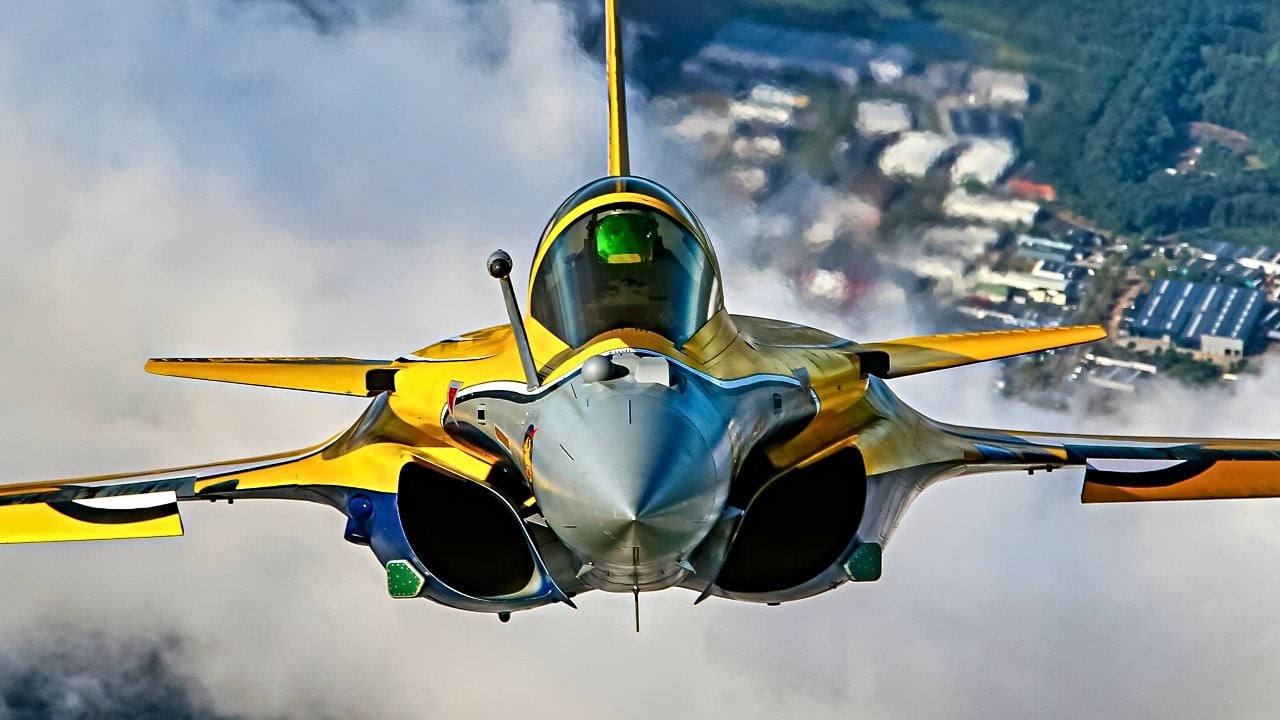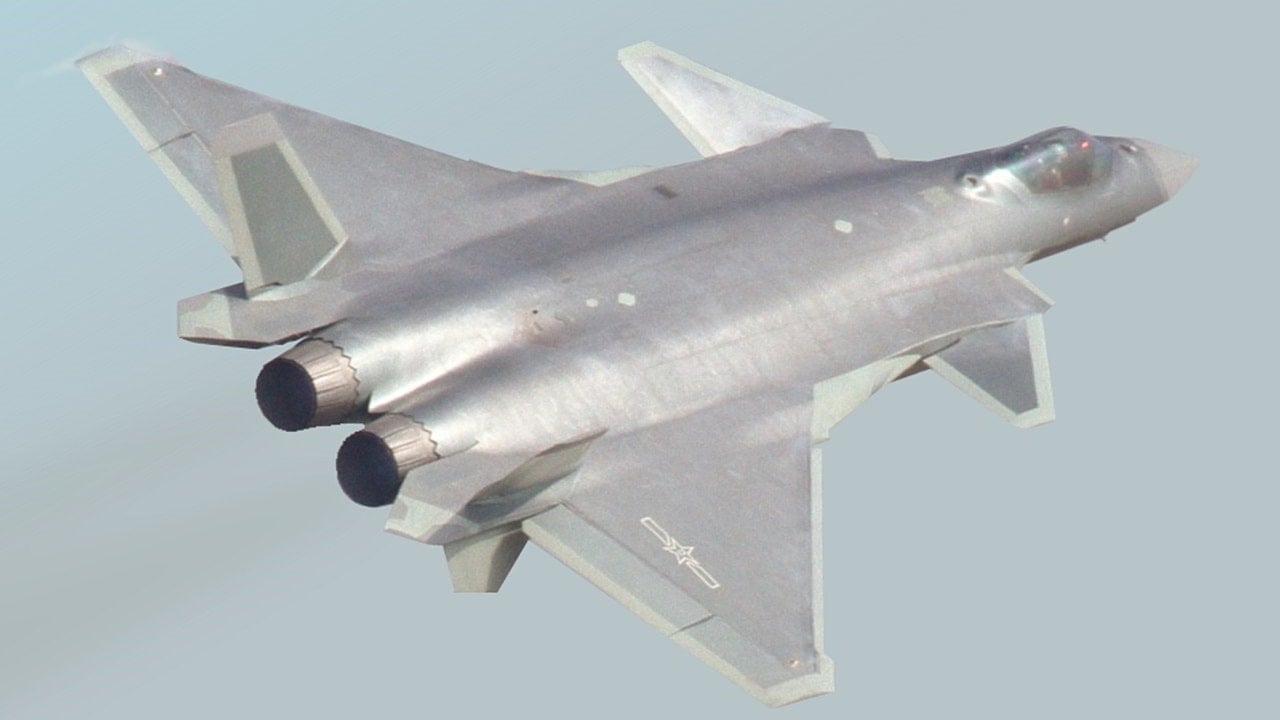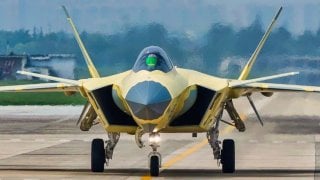China's J-20 Stealth Fighter 'Defeated' Rafale Fighters in Simulation
China's Chengdu J-20 "Mighty Dragon" stealth fighter, developed under the J-XX program, marked a significant milestone with its maiden flight in 2011 and official service entry in 2017. In a 2020 simulation, it reportedly outperformed India's Dassault Rafale fighters, downing 17 of them.
Summary and Key Points: China's Chengdu J-20 "Mighty Dragon" stealth fighter, developed under the J-XX program, marked a significant milestone with its maiden flight in 2011 and official service entry in 2017.

-Despite its advanced design and new WS-15 engines, the J-20 remains untested in real combat.
-In a 2020 simulation, it reportedly outperformed India's Dassault Rafale fighters, downing 17 of them.
-However, experts caution that simulations can't fully replicate real combat conditions. While the Rafale has proven its capabilities in various conflicts, the J-20's actual combat performance remains unproven.
The Chengdu J-20 Fighter vs. Dassault Rafale: Who Comes Out on Top?
Beijing has continued to hype the capabilities of its domestically-built "fifth generation" Chengdu J-20 "Mighty Dragon" stealth fighter – even as China struggled to develop a capable engine for the seemingly advanced aircraft. Finally last June, a new J-20 prototype flew as the Chengdu Aircraft Corporation powered by two WS-15 turbofan engines. That event was seen as a major milestone for the engines, for the aircraft and even for China, as the J-20 could finally live up to the Mighty Dragon moniker.
The Chengdu J-20 was the result of Beijing's J-XX program of the 1990s, which set out to develop an air superiority fighter with precision strike capability. The result was the world's third operational "fifth generation" fighter aircraft – after the United States Air Force's Lockheed Martin F-22 Raptor and Lockheed Martin F-35 Lightning II.
The aircraft took its maiden flight in 2011.
Dubbed the Mighty Dragon, the aircraft was officially adopted and entered service with the People's Liberation Army Air Force (PLAAF) in 2017. It is a sleek, modern aircraft that has been noted for its canard-delta configuration, blended fuselage with low radar cross-section, and large canted twin tails. It is equipped with two large internal weapon bays for long-range and air-to-air missiles.
Yet, despite the hype, the J-20 remains untested in actual combat.
Perhaps wanting to prove something to the world, Beijing employed the J-20 Mighty Dragon in a 2020 simulation against the Indian Air Force's French-made Dassault Rafale fighter.
The twin-engine, canard delta wing, multirole fighter aircraft Rafale has been described by Dassault as an "ominrole" 4.5 generation aircraft that can perform air supremacy, interdiction, aerial reconnaissance, ground support, in-depth strike, anti-ship strike, and nuclear deterrence missions.
17 Rafale's Shot Down!
In the simulation, the J-20 Mighty Dragon came out the victor, reportedly downing 17 of the Rafales.
According to a report from the Eurasian Times, a Chinese pilot of the Wang Hai Air Group from the PLA Eastern Theater Command, along with his colleagues, claimed to have shot down Rafale fighters in the exercises. The Wang Hai Air Group was the first air wing to be equipped with the Mighty Dragon, and thus the most experienced with China's fifth-generation fighter.

Such military simulations can be quite realistic – replicating conditions a pilot might experience in actual combat as well as a degree of uncertainty. However, aviation experts will still be quick to respond that a simulation, no matter how accurate, can never compare to the real deal when it is truly a matter of life and death.
And while Chinese military aviation experts have praised the capabilities of the J-20 following the exercise, it would have been unexpected for Beijing to actually suggest otherwise.
Accordingly, an Indian Air Force expert also told EurAsian Times on condition of anonymity that PLAAF might have set the simulations in a way to equip its J-20 with all the critical strengths, something that is not possible in real combat.

Finally, the J-20s have been marketed as fifth-generation stealth jets, yet the platform's biggest deficiency is that the Mighty Dragon has yet to prove itself in combat, while the French-based Rafale has been in service for nearly a quarter of a century, during which time it has conducted operations in Afghanistan, Libya, Mali, and Syria – conducting ground strikes. Those may not have been air-to-air kills, but the Rafale is a warbird that has employed its claws in combat, while the same can't be said of the Mighty Dragon.
Author Experience and Expertise: Peter Suciu
Peter Suciu is a Michigan-based writer. He has contributed to more than four dozen magazines, newspapers, and websites with over 3,200 published pieces over a twenty-year career in journalism. He regularly writes about military hardware, firearms history, cybersecurity, politics, and international affairs. Peter is also a Contributing Writer for Forbes and Clearance Jobs. You can follow him on Twitter: @PeterSuciu. You can email the author: [email protected].
All images are Creative Commons or Shutterstock.


